Kona coffee is a premium gourmet Arabica coffee grown in the Kona district on the western side of the Big Island of Hawaii in the United States. The area where it is grown is known as the Kona Coffee Belt, and also Kona Coffee Country.
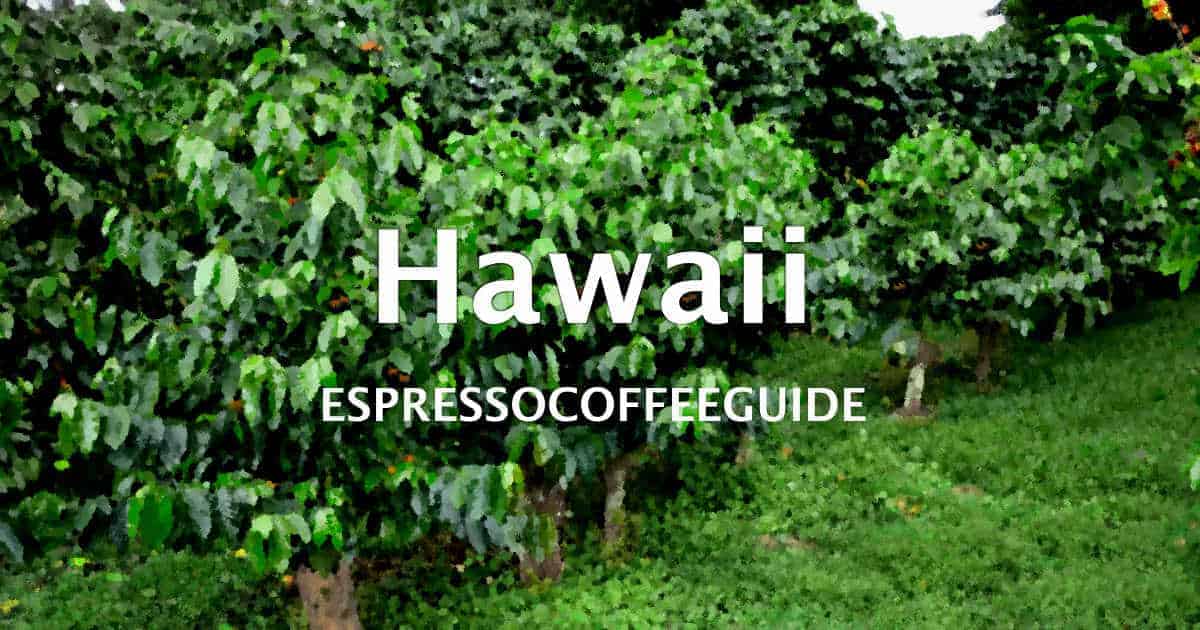
Jump to:
Flavors
Hawaiian Kona coffee is known for its simple yet rich flavor, typically light, delicate and mild with a complex aroma and taste.
A good Kona coffee is clean and well-balanced with a medium body and cheerful, bright acidity yet classically balanced and often exhibiting spicy and also buttery qualities with subtle winey tones, intensely aromatic, and with a great aftertaste/finish.
The finer Kona coffees are purchased from single estates rather than a mix of Kona coffees pooled for general market sale.
Growing Regions
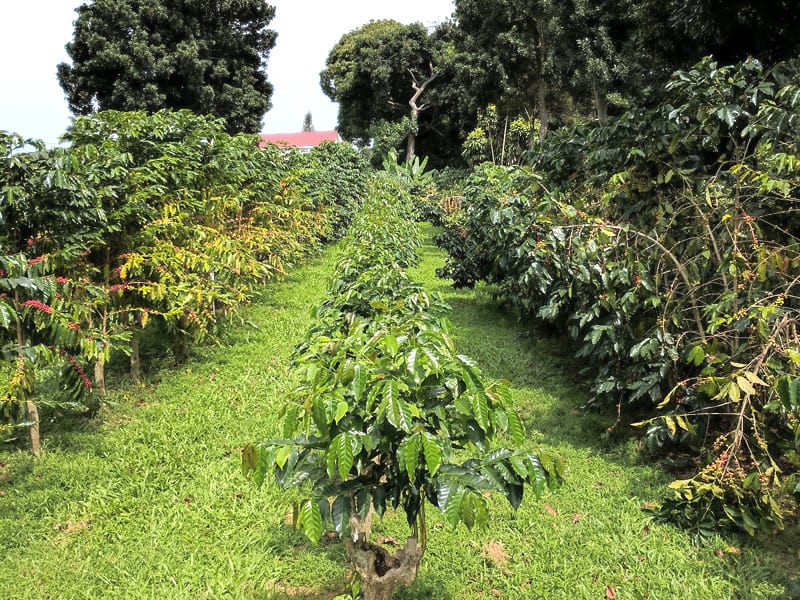
Though the elevations of Kona coffee farms are lower than the elevations of some of the world's top Arabica coffees, when it comes to coffee bean quality a bigger factor than elevation is how fast the coffee cherry (fruit) mature on the coffee plant, and the Kona region's growing conditions provide for a long maturation period.
Grades
The primary grades of "Type I" Kona coffee beans are:
- Extra Fancy (the highest grade)
- Fancy (also a high grade)
- Kona #1, a mid-grade coffee bean often sold in bulk and used in many restaurants; and
- Prime (the lowest grade)
All Hawaii Kona Peaberry Coffees are classified as "Type II", and these are in turn divided into Peaberry Prime and Peaberry #1.
Varietals
The bulk of coffee grown in the Kona Coffee Belt is of the Typica varietal (Coffea arabica var. typica). There is also a relatively small amount of Blue Mountain coffee that is grown in Kona. These plants are the coffee plant varietal Coffea Arabica var. blue mountain which is traditionally grown in Jamaica and marketed as Jamaica Blue Mountain coffee.
A fine Blue Mountain coffee displays a classic mild flavor and is well-balanced with a slightly sweet taste and a bright to vibrant acidity. The brewed Blue Mountain coffee has very little bitterness and its sparkling aroma exhibits sweet herbal and nutty overtones.
It remains to be seen whether the emerging Blue Mountain coffees of the Kona region will meet the quality standards of Jamaica Blue Mountain coffee grown in Jamaica.
Coffee Belt
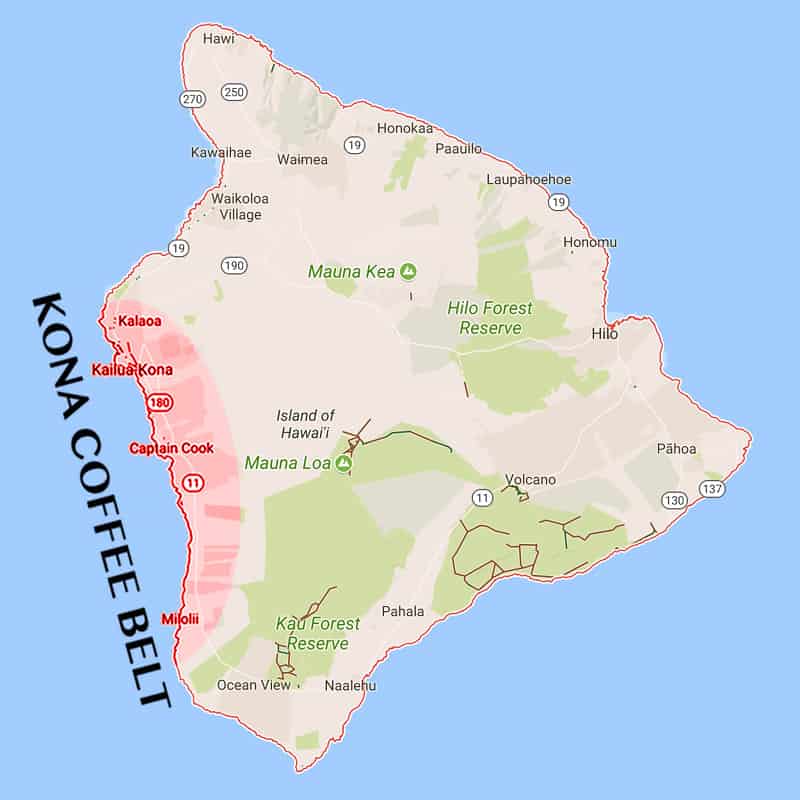
Kona coffee is grown within Hawaii's Kona district in the prime coffee-growing area known as the Kona Coffee Belt, which is about 30 miles long and only about one mile wide at elevations ranging from about 500 feet to 2,500 feet along the cool and fertile western slopes of the volcanoes Mauna Loa and Hualalai.
Most of the coffee plants grown in Kona are the coffee plant varietal called Typica (Coffea arabica var. typica). Also grown in the Kona region, though much less extensively, is the Blue Mountain coffee plant varietal (Coffea Arabica var. blue mountain).
Farms
Within the Kona Coffee Belt are some five hundred Kona coffee farms, most of them less than five acres in size. Kona's coffee mills and coffee farms are mostly family-owned ventures.
In the early years of Kona coffee farming a century ago, Japanese immigrants were the most numerous Kona coffee farmer - at one point four out of five Kona coffee farmers were Japanese. Today many Kona coffee farmers are fifth generation descendants of these original Kona coffee farmers.
Harvesting and Processing
Kona coffee is hand picked at peak ripeness, with the farmers returning up to eight times per season to pick the cherry.
Once the coffee cherry are picked they are wet processed (washed) and this includes fermentation, washing the coffee beans, then drying, milling, and grading, resulting in green coffee beans that are milled but not yet roasted. The Kona coffee beans are then ready for roasting and packaging for sale.
The Kona Coffee Belt provides optimal growing conditions including the climate as well as the soil making Kona coffee a wonderful example of how a true gourmet coffee is nurtured From Soil to Sip. Also see Kona Peaberry Coffee; Hawaii Kona Blend Coffee; Hawaii Coffee.
Roasting
As a premium coffee, you'll want to make sure you're getting Kona coffees as close to roast date as possible. This helps ensure that it's as flavorful as possible.
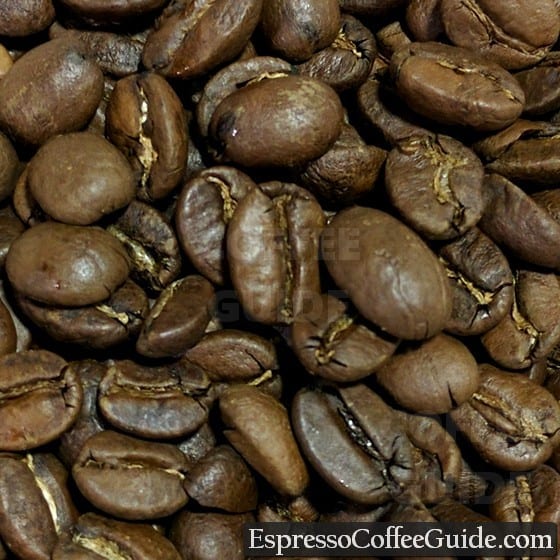
A medium roast is usually recommended, to keep the individual nuances and flavors that make Kona coffee so special.
Your personal taste preferences will ultimately decide what roast you go with, whether medium or dark. It can also be made into an espresso roast, though this makes it more generic tasting.
Coffee Berry Borer?
The Coffee Berry Borer beetle is a small beetle that lays its eggs inside the coffee cherry (fruit) where they develop into larva and then begin feeding on the pit of the coffee cherry which is the coffee bean.
Subsequent to this infestation other insects may attack the coffee fruit and the coffee bean at the center of the fruit. These other invaders may cause bacterial and fungal damage.
On the Big Island of Hawaii in Kona Coffee Country there is a coffee quarantine with the goal of stopping the spread of a coffee pest called the Coffee Berry Borer which has been discovered on many Kona coffee farms.
Peaberry Coffee
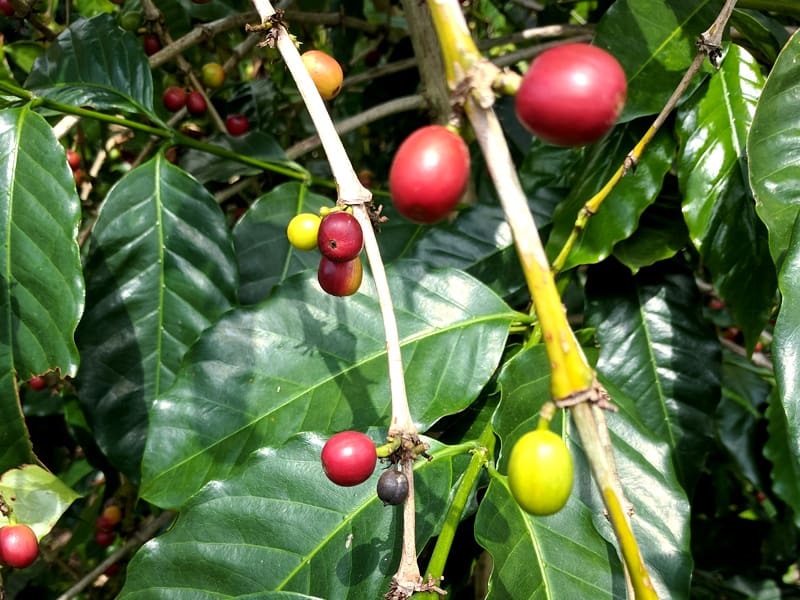
A Hawaii Kona Peaberry is a Kona coffee cherry (fruit) that encases one whole coffee bean rather than the usual two half-beans. Under the Kona coffee grading system, these Kona Peaberry are classified as Type II while cherry containing two half-beans are classified as Type I.
Valued for their robust flavor, Kona Peaberry are the rarest type of coffee beans and have a higher density than Type I Kona coffee beans. Coffee brewed from Hawaii Kona Peaberry is known to have a smooth consistency and rich aroma.
Peaberry are typically separated from the rest of the coffee crop and sold as a higher grade of coffee bean. Kona Peaberry beans are considered the “champagne of Kona coffee” and usually sell for a higher price.
Peaberries are not necessarily better than the other grades (Fancy, Prime), they're simply less rare. They're sorted out during the sorting process so that roasters can ensure a consistent roast, as their unique size would cause an uneven roast development if mixed with standard beans.
This may be due to the peaberry's ability to get more nutrients from the coffee plant while developing within the coffee cherry. The peaberry bean may also roast differently due to its different shape.
Grades of Type II Kona coffee include Peaberry Prime and Peaberry Number One, sorted by size, moisture content, and purity of bean type.
FAQ
Up to three million pounds of green coffee beans (unroasted coffee beans) were produced each year in the Kona region around 2007. It was estimated for the 2013/2014 season that 2,400,000 lbs of green coffee beans were produced. A large amount of the Kona coffee crop is blended with other coffee beans (e.g., 90% Central American coffee beans mixed with 10% Kona Coffee beans to produce Hawaii Kona Blend Coffee), and thus there is an average of about twenty million pounds of coffee sold each year with the label of Kona Coffee (though much of it is more properly described as Hawaii Kona Blend Coffee).
Tours
Nearly 700 coffee farms are nestled into the slopes along the western sides of Hualalai and Mauna Loa Volcanoes on the Big Island of Hawaii. Most of these Kona coffee farms are family owned and operated coffee farms.
This prime coffee growing area is known as Kona Coffee Country, and it's a great place not only for visiting coffee farms and meeting farmers, but also for seeing an area with a rich history and traditions of coffee growing.
The Rich History of Kona Coffee Farming
The first coffee was planted in Kona in 1828 by Reverend Samuel Ruggles, an American Protestant missionary who had originally come to the Islands with the First Company of American missionaries.
Eventually the Kona coffee industry took hold, and Kona coffee began its rise in rankings to become regarded as one of the world's premium gourmet coffees.
Today there are nearly 700 Kona coffee farms and most all of them are independently owned family owned and operated coffee farms. Many Kona coffee farms offer farm tours as well as coffee tastings and more.
For example, the Kona Coffee Living History Farm features a farm tour that relives the days of the pioneering Kona coffee farmers in the 1880s, and hands-on activities make it fun for kids. At the H.N. Greenwell Store Museum you can see what a real store was like in that time period more than a century ago.
Kona also has a number of organic coffee farms and a great deal of diversified agriculture with many fruit and nut trees planted among the coffee orchards. Many farms also raise animals from sheep and goats to ducks and chickens.
A visit to Kona Coffee Country is also a a great way to get some freshly roasted coffee right from the source. Every November you can check out the Kona Coffee Cultural Festival, a 10-day series of events including everything from a coffee-picking contest to a parade, beauty pageant, and coffee cupping contests.
Coffee and Espresso Brewing Tips
For tips on brewing the perfect cup of Kona coffee see our section on coffee brewing. You can also read detailed coffee flavor profiles of Specialty Coffees and instructions on preparing Espresso Drink Recipes.
For detailed instructions see Pulling A Perfect Espresso Shot and also How to make Lattes and Cappuccinos.
Buy Kona Coffee Beans
- ✔️ Fresh roasted to order
- ✔️ 100% high qualtiy Arabica coffee
- ✔️ Custom grind (or whole bean)
- ✔️ 1-way valve, laminate bag (for freshness)
- ✔️ Bulk discounts


Esman F
Great post! I would really like to try Sulawesi Toraja Coffee but do you know if i can order it online? The problem is that i'm from Sweden and we don't have a lot of coffee option like this.
Mikaela Dolan
Hi i am wanting to open a coffee shop and would love to get some of this coffee. I live in Australia in nsw and would like a steady supply?
Peter Chambers
Where can I find a sampler of authentic Hawaian Maui coffee without having to spend an arm and a leg?
EspressoCoffeeGuide
Hey Peter! Where are you located? I can make a recommendation based on where you're from.